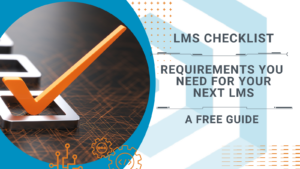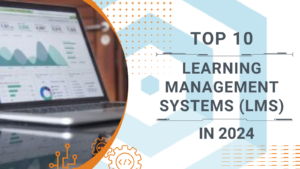The global developer population is soaring; according to Statista, it is expected to reach 28.7 million people by 2024, an increase of 3.2 million from 2020. As a result, there are a lot more tools and products that are aimed at developers, and more companies are selling their software directly to this audience.
Business-to-developer (B2D) companies need to attract, nurture, convert, and retain developers. And once they are customers, B2D companies also want to expand their product’s usage from a single developer to a team of developers, and perhaps eventually into the entire department.
But developers aren’t receptive to traditional marketing techniques, which means B2D companies need a different marketing approach. That’s where developer education comes in as a crucial tool in making this awareness, acquisition, monetization, and expansion process happen.
Shifting from traditional marketing to education-as-a-form of marketing is easier if you have a developer education platform that supports these initiatives. Below, we’ll explain the importance of developer education and list the top features to look for in a developer education platform.
Why is Developer Education Important?
Developers enjoy learning about technology, and they want to know about a product’s features rather than just read about its list of benefits. A developer education program improves developers’ awareness of your product, teaches them how to use it, helps them understand how it solves their problems and nudges them towards product adoption. It works by helping developers understand – not marketing a product to them – through hands-on experience of your product and the problems it solves.
If you aren’t educating developers, you’ll lose a lot of them as they start evaluating the product – or worse – lose a sales deal because a developer vetoes the purchase of your product because they’ve never heard of it or used it before.
Why Don’t Traditional Learning Management Systems Work for Developer Education?
Creating a hands-on, educational experience using a traditional learning management system (LMS) can be a cumbersome process.
These systems often focus on video or multiple choice-based content and assessments, which isn’t an effective way to teach developers about a technical product. When a developer is learning your product’s code or how to use its technical functionality, they need to get their hands on the product and learn by doing. Most traditional LMSs are not set up to enable hands-on learning and, in fact, add more friction between developers and your product.
What companies need for developer education is content that is more integrated with the product experience.
4 Features to Look For in a Developer Education Platform
A developer education platform enables you to build frictionless and educational product experiences for developers. This approach provides genuine, educational content about your product that lets developers experience its features through hands-on learning, experimenting with it, and figuring out how it works. Below we’ll explain the key features you should look for when evaluating developer education platforms.
1. Software Sandboxes
When a developer comes to your website, they aren’t going to read or even believe most of the marketing content on your product. They want to see how your product works, to play around under the hood, and make their minds up about whether it does what they need. And they can’t do this in one sales-led demo. Hands-on, immersive education experiences improve developers’ knowledge of your products, help them discover its most valuable features, and increase product usage.
Software sandboxes enable developers to try out your product early on in the purchase journey in real-world scenarios. They provide a learn-by-doing environment that lets developers analyze your product to determine if it solves the problem they’re working on.
2. Badges and Interactivity Tools
To educate themselves about your product, developers need to read copious amounts of uninterrupted, continuous documentation. Look for a developer platform that enables you to turn your existing developer documentation into an immersive (and dare we say, entertaining), educational experience by adding interactive content, such as:
- Community discussions
- Open-ended questions
- Quizzes
- Surveys
- Multiple-choice questions
Gamification and in-course progress indicators also nudge developers to continue learning about your product.
3. Self-Paced Course Creation Tools
If you want to successfully educate developers, you need to forget about selling your product and instead lower the friction between developers and your product. A developer education platform enables you to deliver scalable, self-paced online training tailored to different developer roles, personas, and seniority levels.
It collects a lot of granular data about the developer that isn’t possible if you only provide blogs or static tutorials, which have no assessment capabilities. You can see where developers are getting stuck and where they are dropping off and use this data to create better courses and improve the developer’s learning experience. You also have the option to link course enrollments to your marketing software for ongoing nurturing campaigns.
Developers get real-time feedback as they go through the content, including knowledge checks and quizzes. You can also use the platform to help search engines to discover your courses and ensure that your courses are optimized for relevant keywords.
4. Reporting and Analytics
Developer education metrics differ from both traditional marketing metrics and overall developer marketing metrics. The purchase rate is often not the main metric that companies measure, with usage and developer adoption being the main focus.
A developer education platform should enable you to gain insight into developers’ product experience and track the metrics that matter through interactive tools and reporting. These tools allow you to discover which product features your developers are focused on, which features they’re learning about, and the courses they’re taking.
You can track key metrics, such as:
- Course enrollments and completion
- Usage of your platform and specific features
- Number of API calls
- Average number of logins per developer
- Daily/monthly active users
- Number of developers engaging with your product 30 days after sign-up
By monitoring these metrics, you get the visibility you need to track and improve your developer education initiatives.



